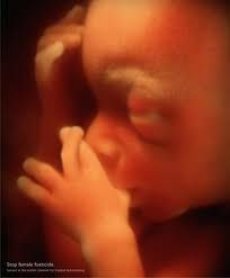New publications
Sex hormones determine the body's future susceptibility to disease
Last reviewed: 30.06.2025

All iLive content is medically reviewed or fact checked to ensure as much factual accuracy as possible.
We have strict sourcing guidelines and only link to reputable media sites, academic research institutions and, whenever possible, medically peer reviewed studies. Note that the numbers in parentheses ([1], [2], etc.) are clickable links to these studies.
If you feel that any of our content is inaccurate, out-of-date, or otherwise questionable, please select it and press Ctrl + Enter.

Embryonic cells are very sensitive to the level of sex hormones; an imbalance in the direction of estrogens or testosterone in the early stages of development can manifest itself not only in harmless anatomical features, but also in the future predisposition of the body to various diseases.
The ring finger in men is usually longer than the ring finger in women; in some cultures, its length is directly linked to male fertility. It turns out that this seemingly insignificant feature has a very fundamental explanation. The size of the ring finger depends on hormonal balance during embryonic development, and this finger alone is not the only factor: the same mechanism most likely determines the development of a whole range of traits in the adult organism.
The existence of some connection between sex hormones and the length of fingers on the hand has long been assumed, but researchers from the University of Florida (USA) have for the first time received strict experimental confirmation of this. Experiments on mice have shown that the finger rudiments of mouse embryos are literally packed with hormonal receptors that respond to testosterone and estrogens. By controlling the level of both hormones, it was possible to influence the length of the ring finger: increasing the level of testosterone stimulated the division of bone precursor cells; blocking testosterone receptors, on the contrary, suppressed it. The bone rudiments of different fingers had different sensitivity to sex hormones and therefore responded differently to their content. In total, 19 genes are responsible for sensitivity to testosterone and estrogen in the embryo.
The scientists plan to publish the results of their experiments in the journal PNAS.
Of course, the point of the work is not to establish the influence of sex hormones on the features of the anatomical constitution. The relative size of the fingers has been linked to everything: with aggressiveness of character, and with musical abilities, and with sexual orientation; there have been attempts to find a correlation between the length of the fingers and various health problems, from autism and clinical depression to breast cancer and cardiovascular failure.
Since it has now become clear that hormonal levels in embryonic development can have such long-lasting effects, influencing the entire subsequent life of the organism, this opens up new possibilities for prenatal medicine. The relationship of many diseases with anatomical features can be explained by hormonal imbalances in the early stages of development, and timely intervention can literally change the fate of an unborn person.

 [
[